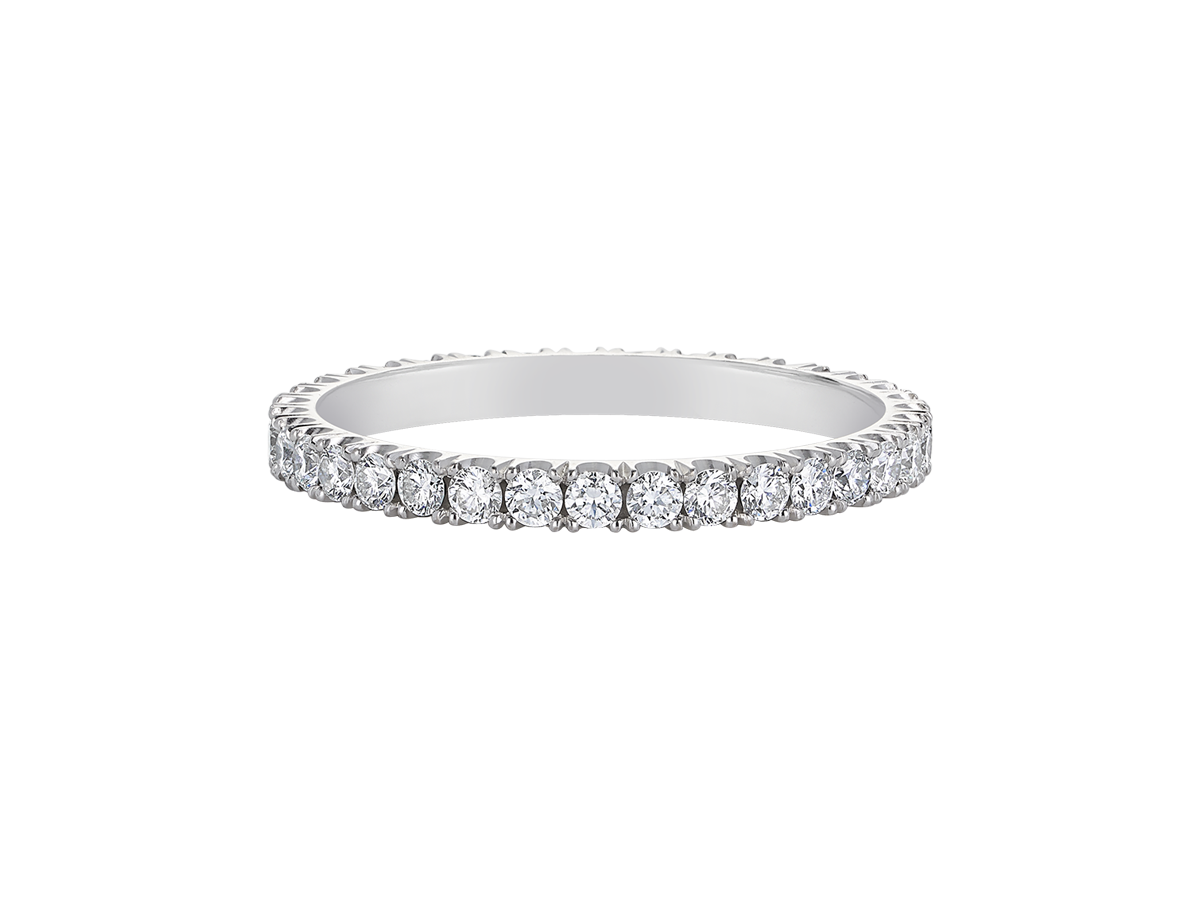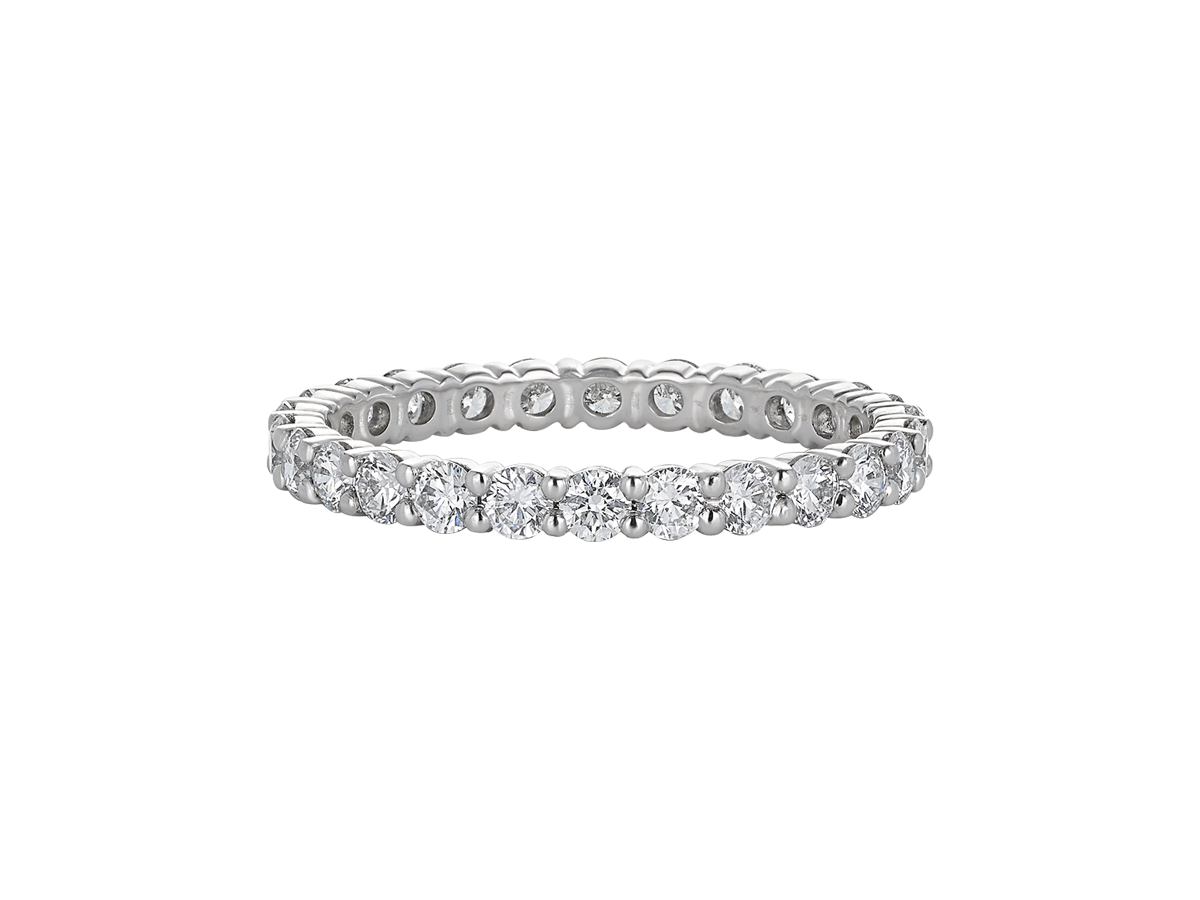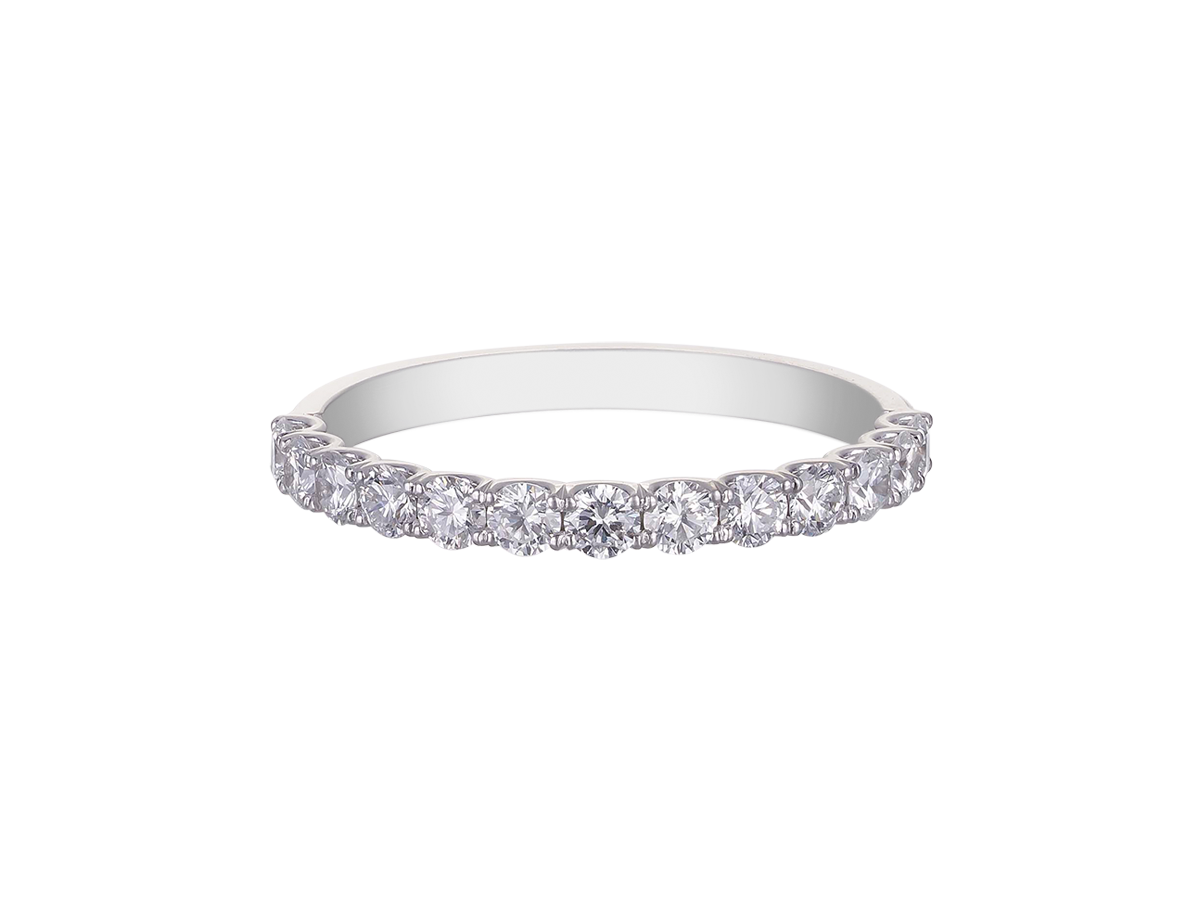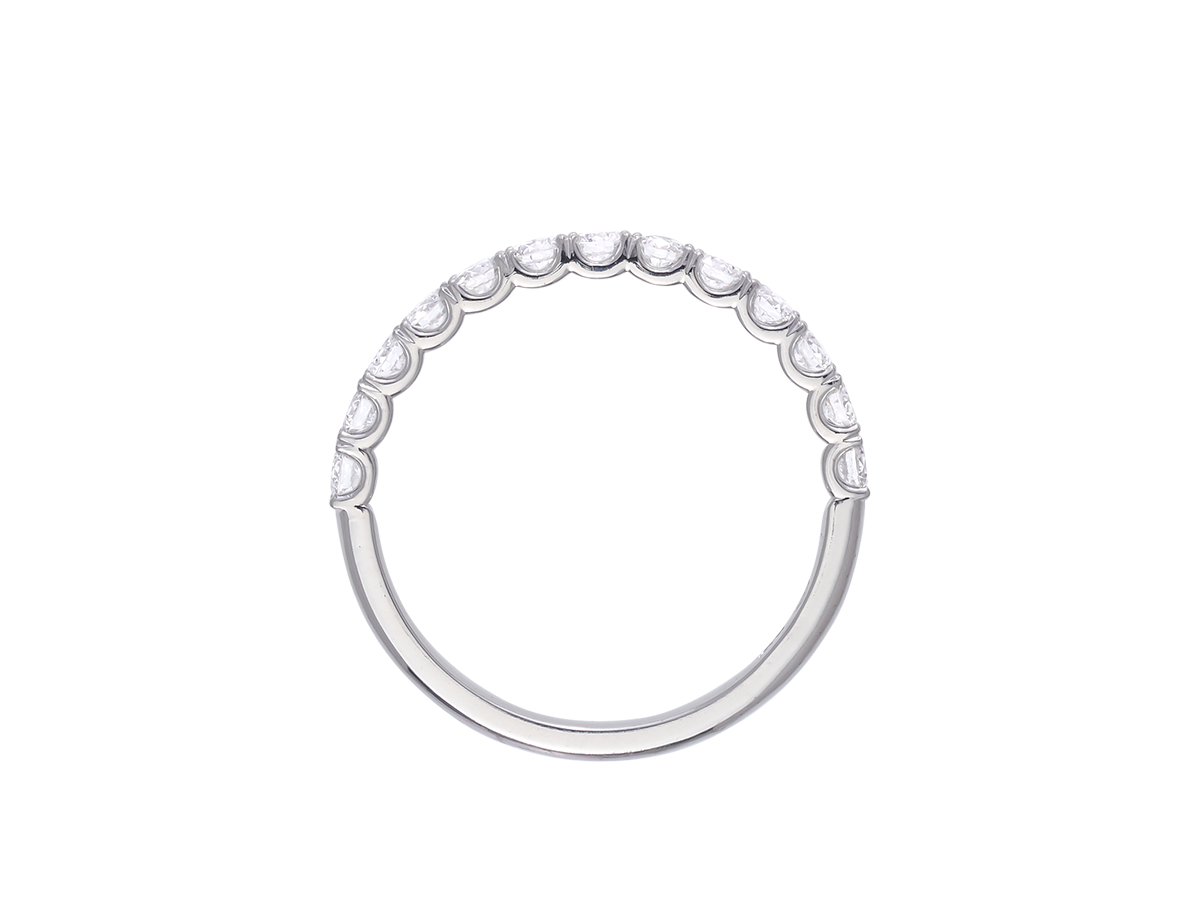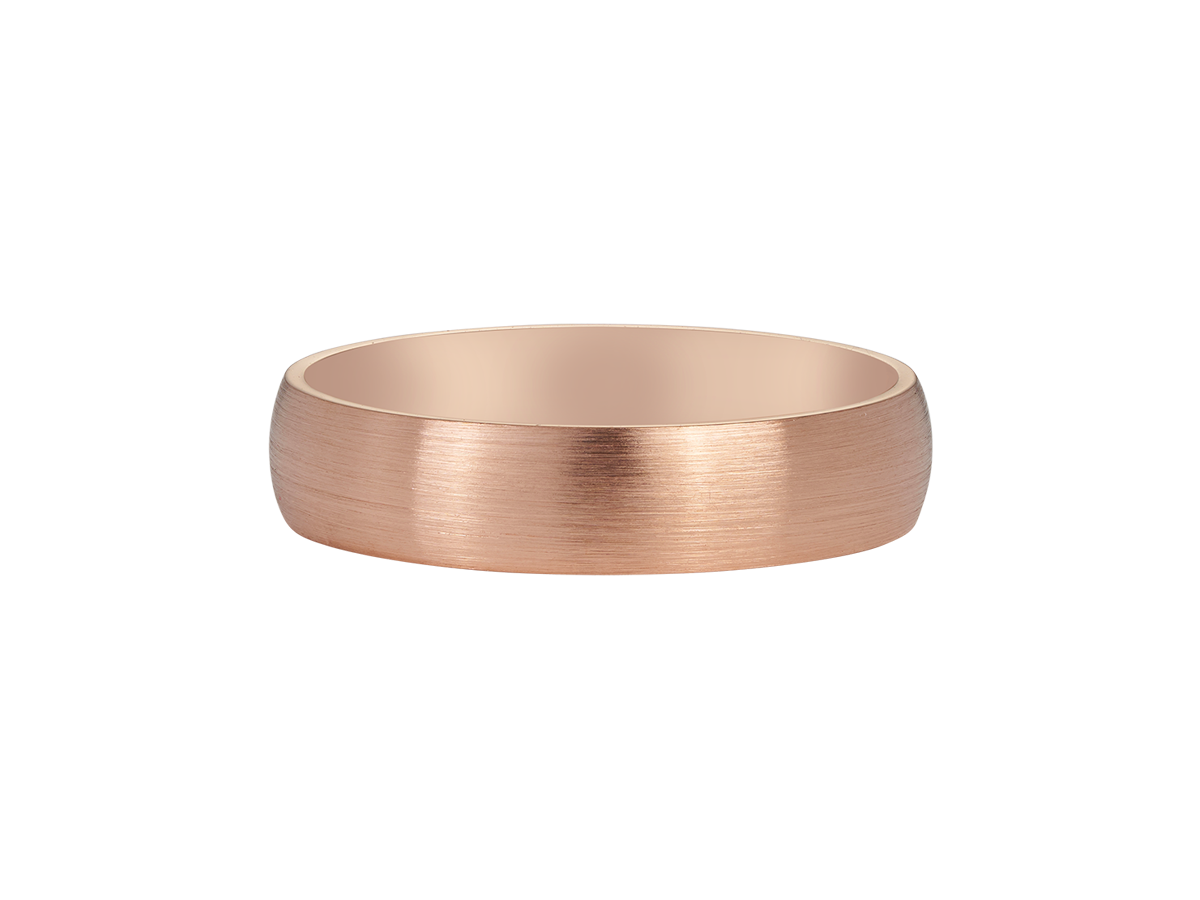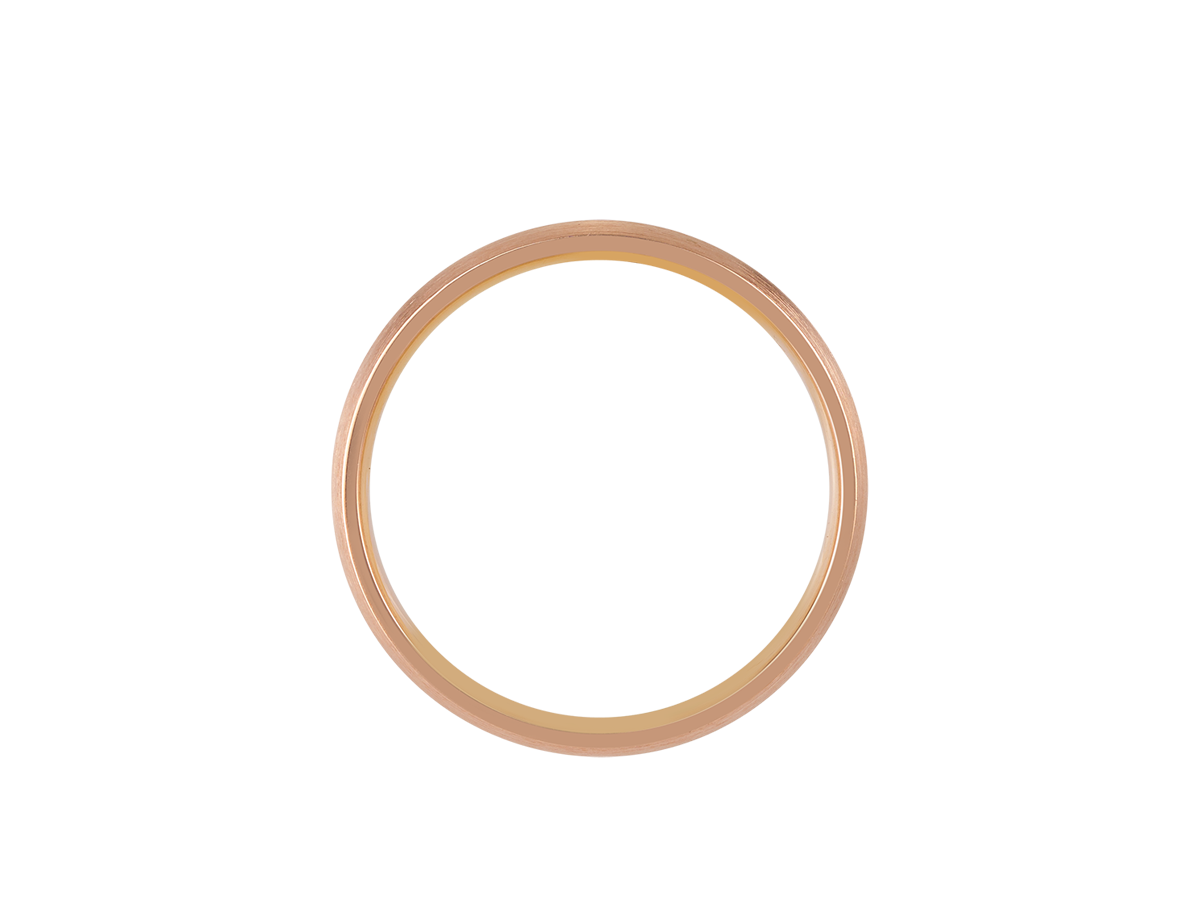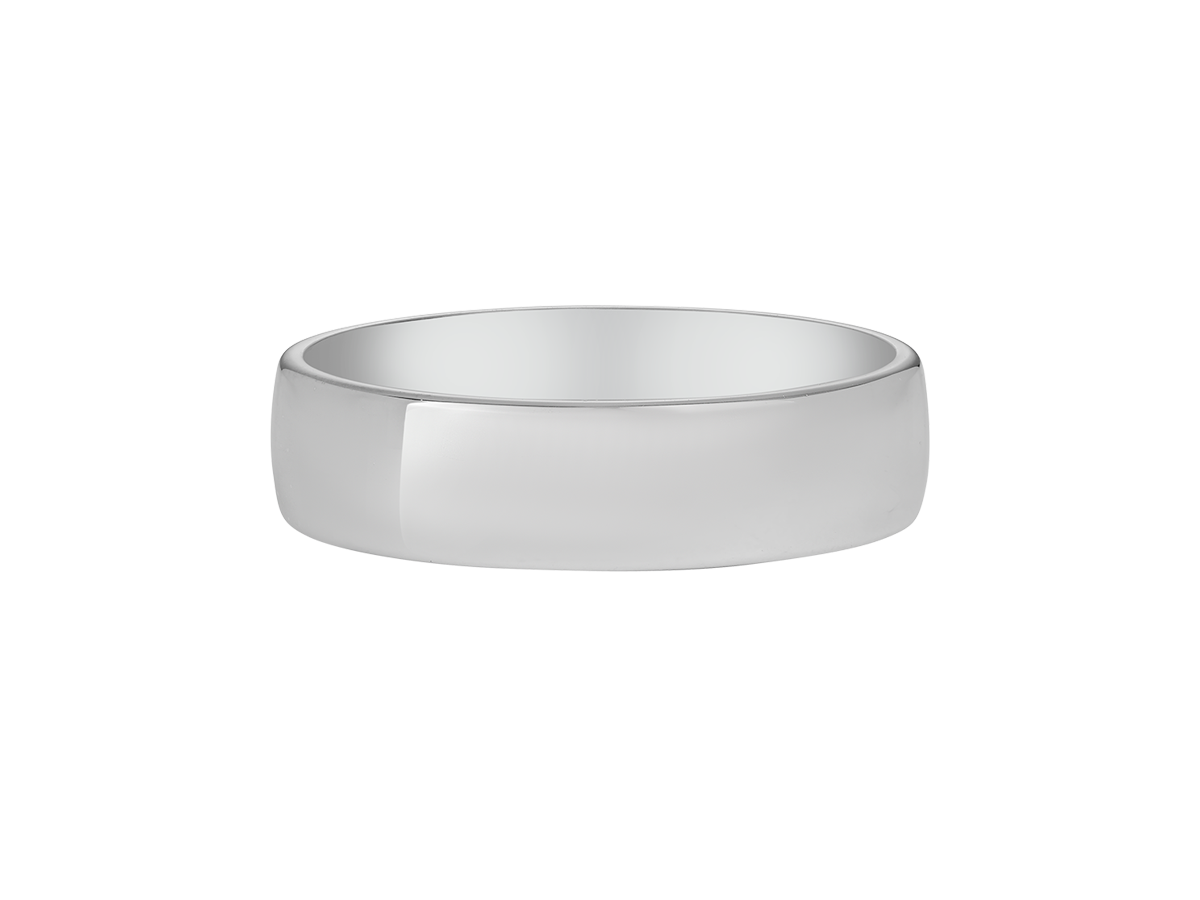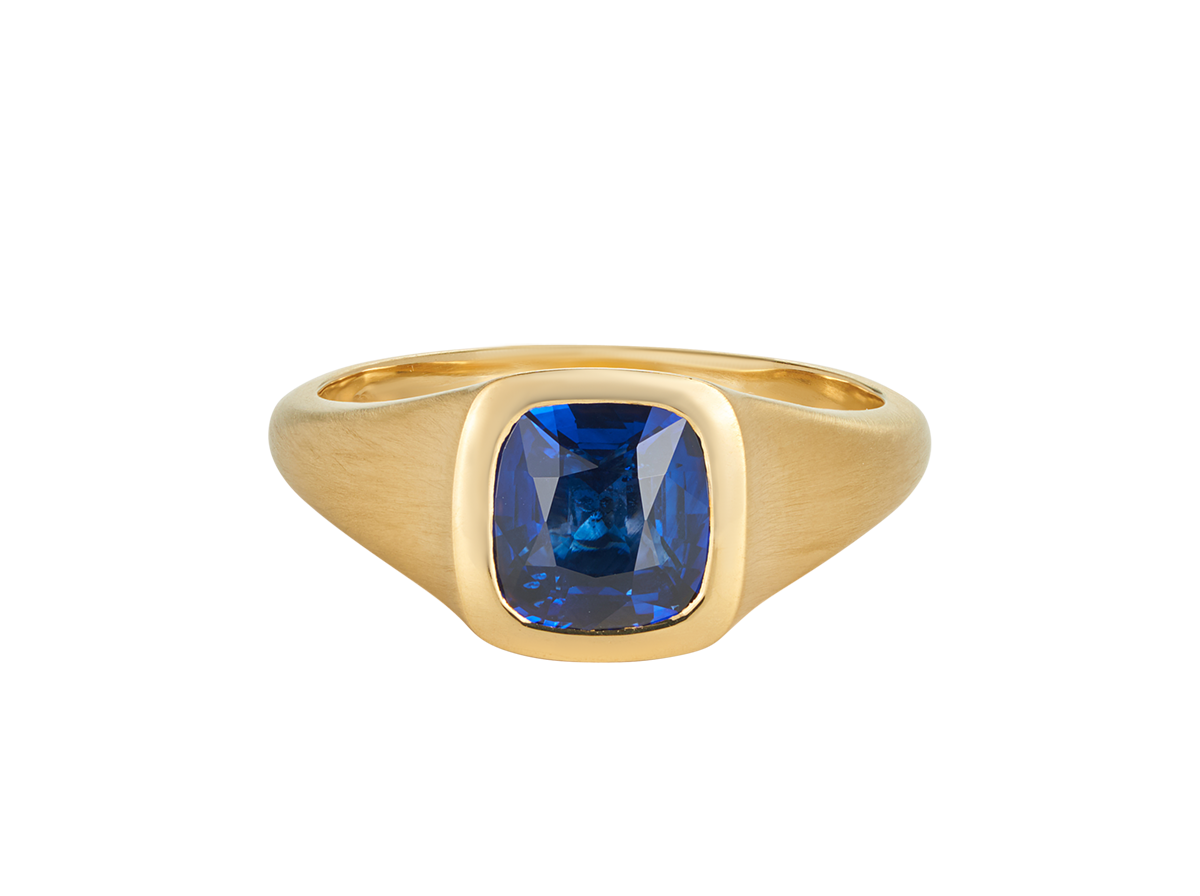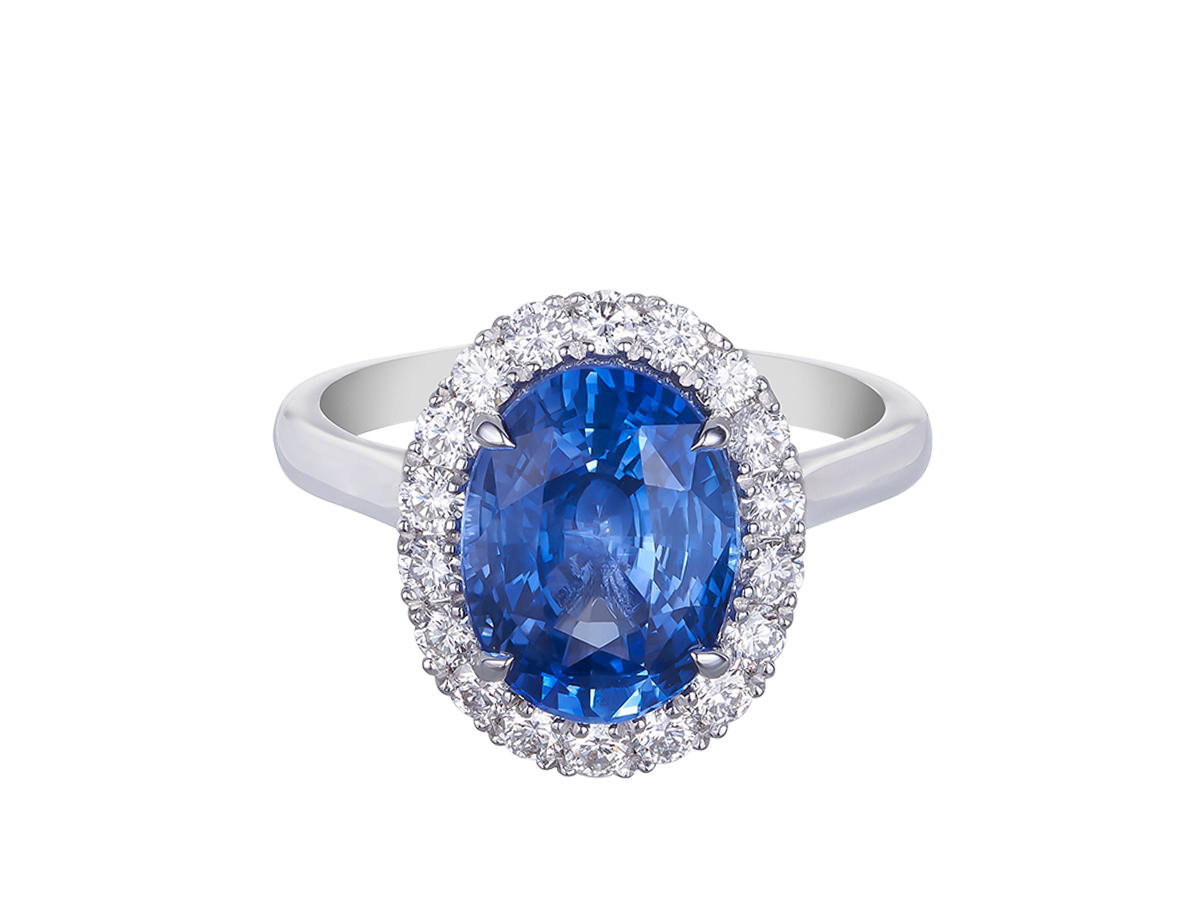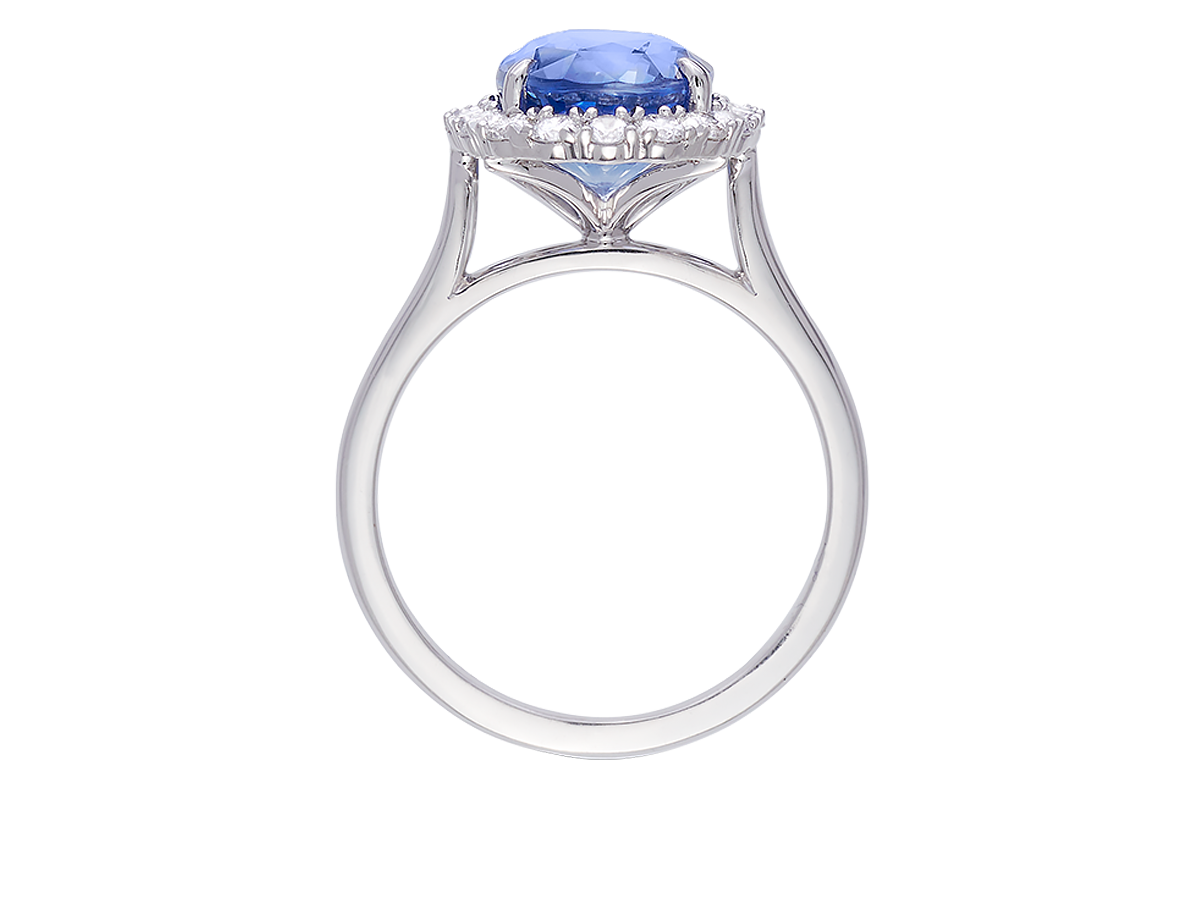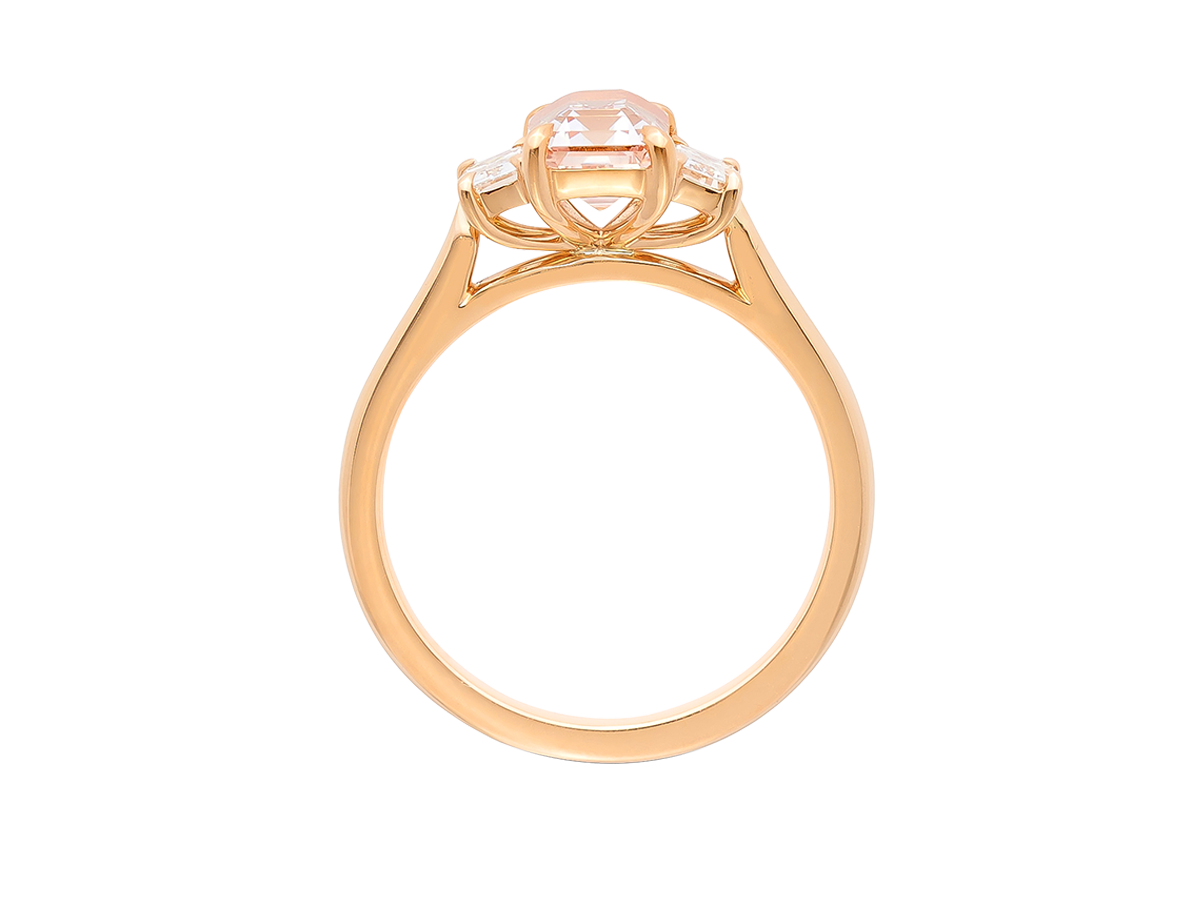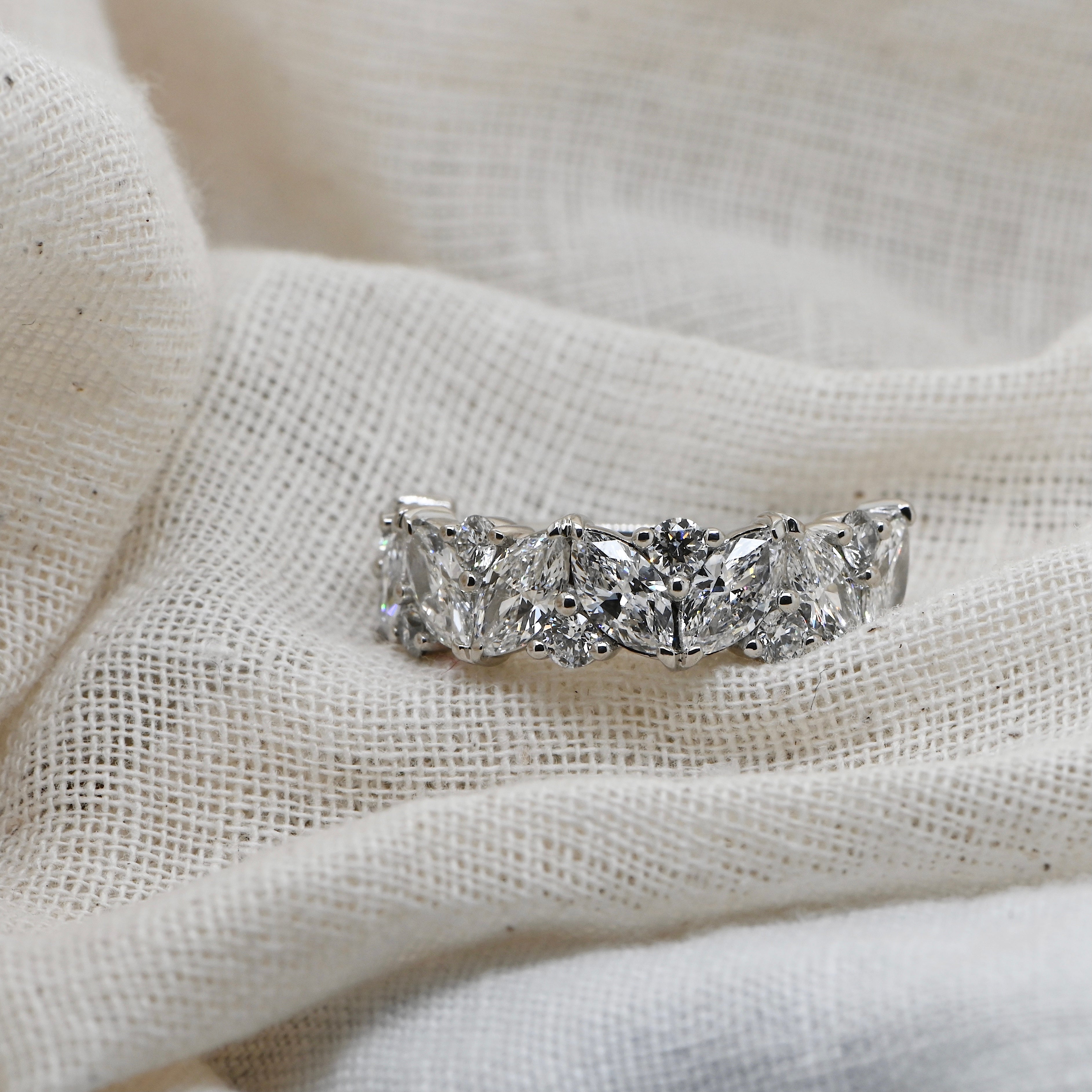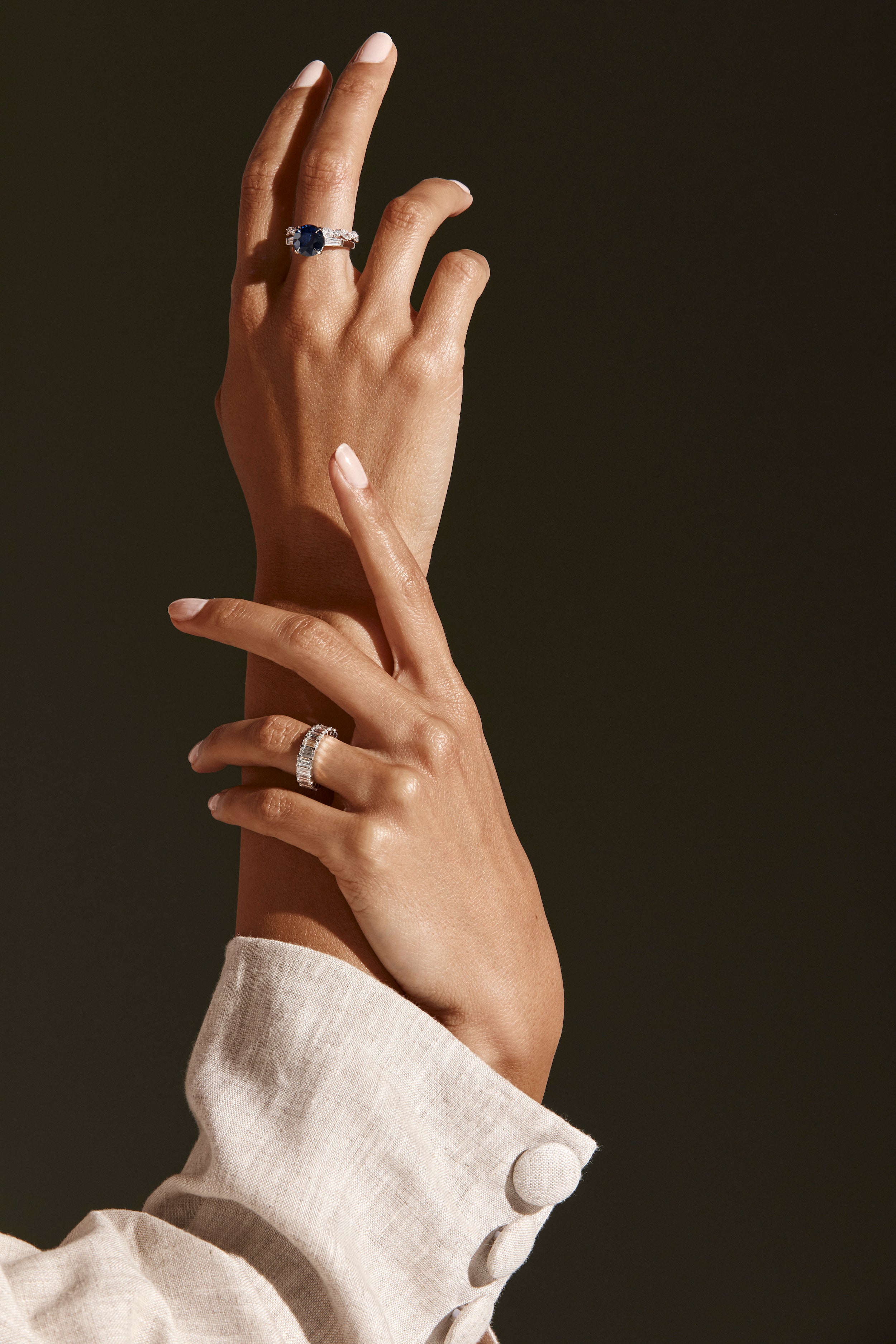In its natural form, gold is a soft, yellow coloured metal. You’ll hear gold discussed in terms of 24 parts or carats. For jewellery purposes, gold is always made into an alloy, meaning it is combined with other metals to establish strength and to achieve desired colour properties.
At A.G, we use 18ct gold for our engagement rings meaning the ratio of the alloy is 18 parts gold mixed with other metals. All A.G white gold rings use a premium nickel-free 18ct white gold which includes palladium content making the metal closer to a true white than alloys used in less premium white golds. Despite this, as white gold has a slight off-white colour, we rhodium plate our white gold rings to brighten the metal colour and to increase the durability and lustre of the metal.
Rhodium is a hard, bright white metal from the platinum family with a vivid mirror finish. Rhodium plating is the application of a very thin coating of this rhodium metal to the surface of a white gold ring via an electroplating process, giving the white gold an ultra-white colour. Rest assured, rhodium plating is hypoallergenic.
Rhodium plating wears off over time and will need to be re-applied through the life of a white gold piece. Typically, an A.G ring needs to be re-plated once every 12 to 18 months, however this can vary depending on how the ring is worn and what the wearer does. The A.G team can determine when rhodium plating is required when servicing your piece (servicing is recommended every six months or so). Many jewellers charge for rhodium plating however this is complimentary for A.G clients.






























